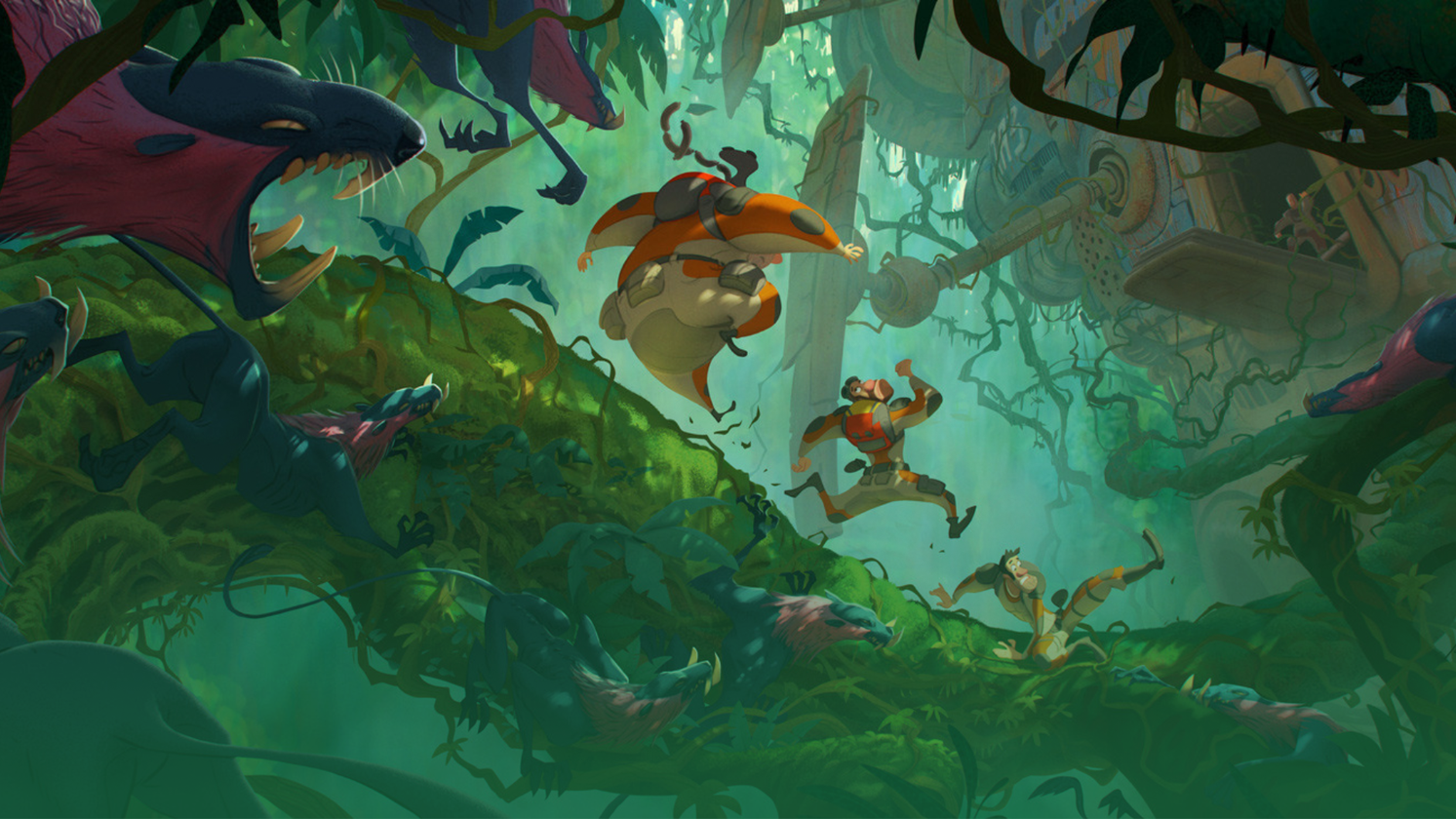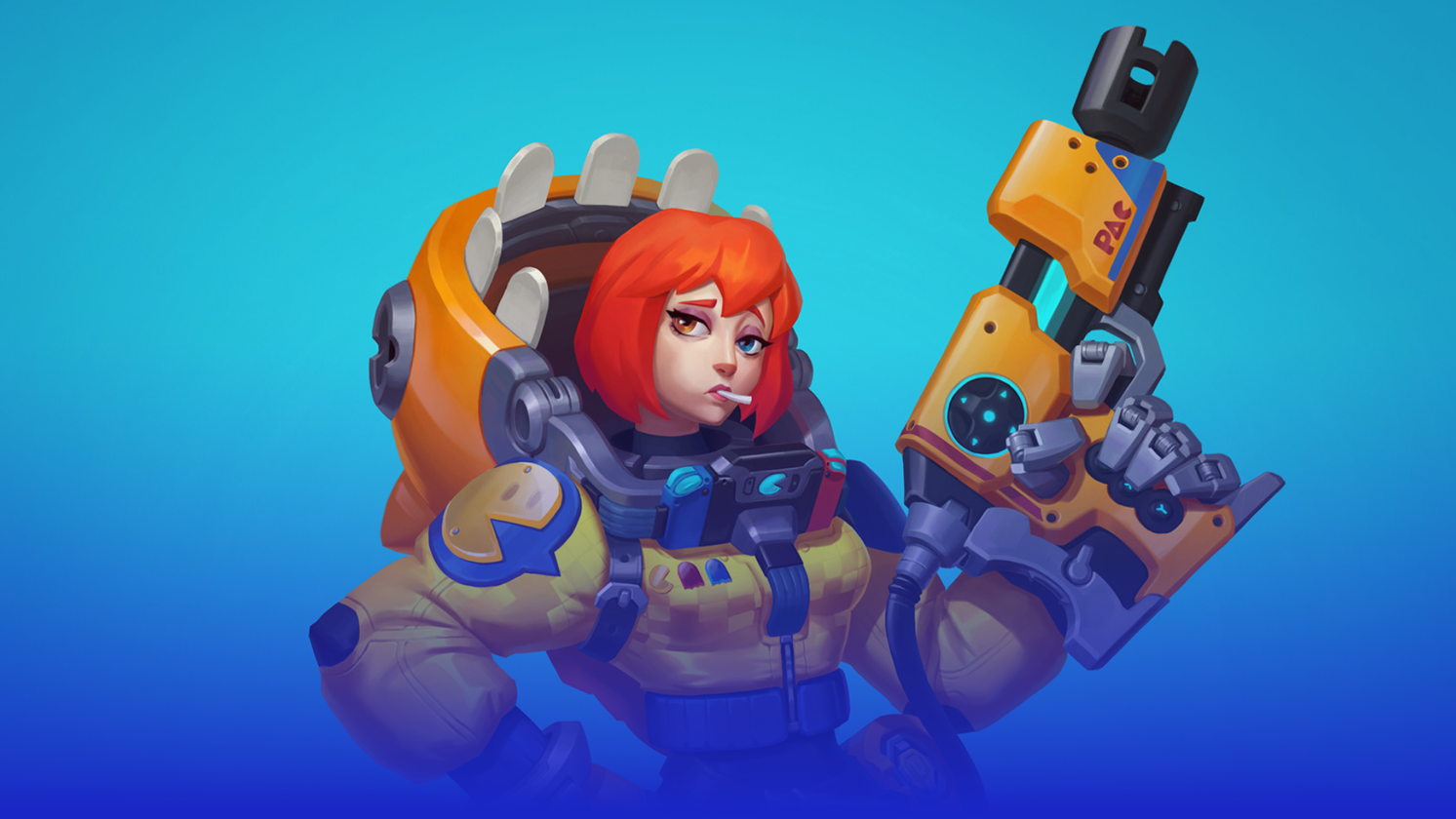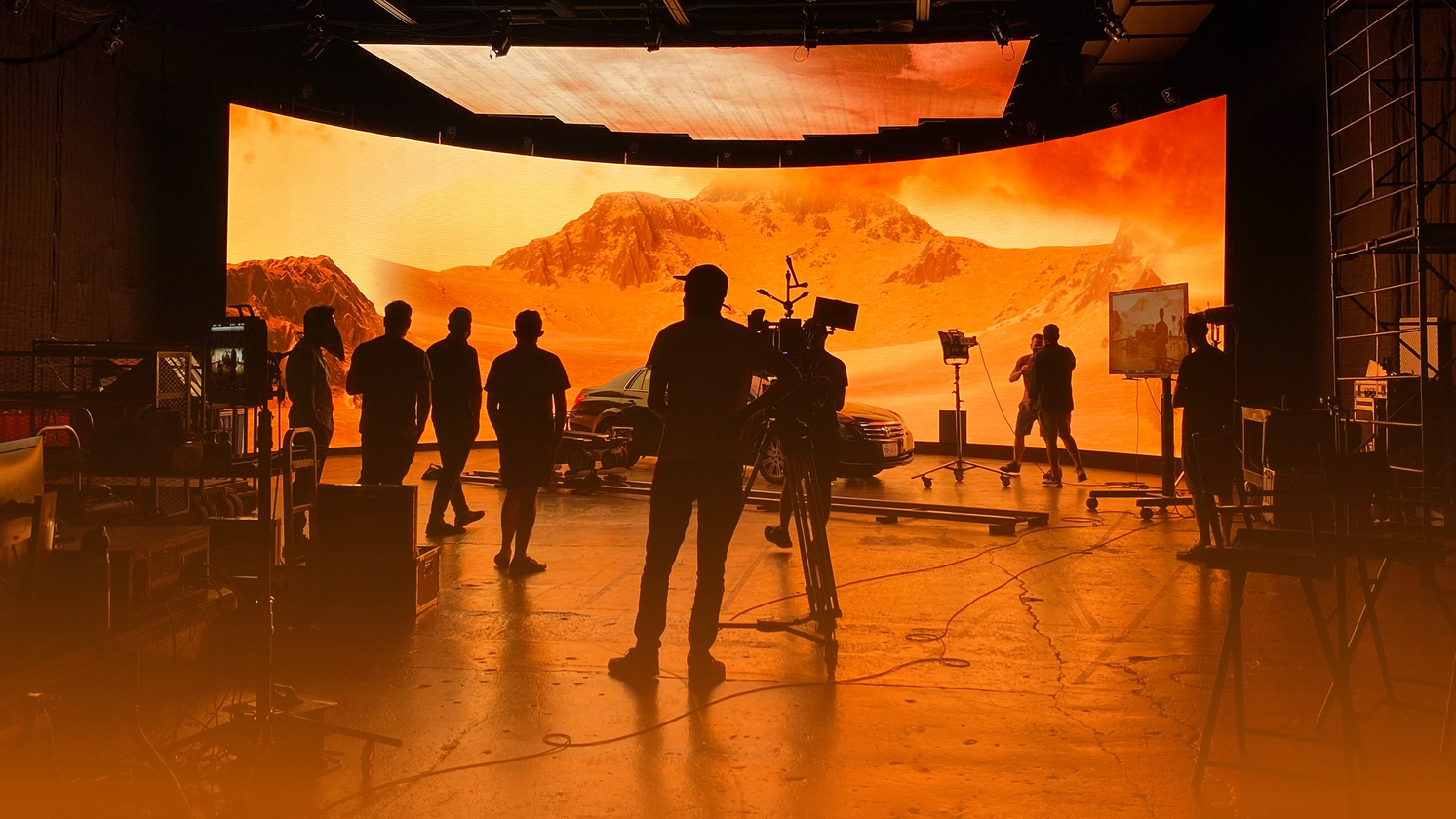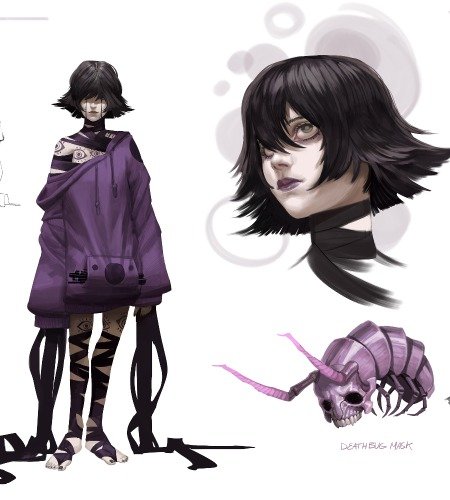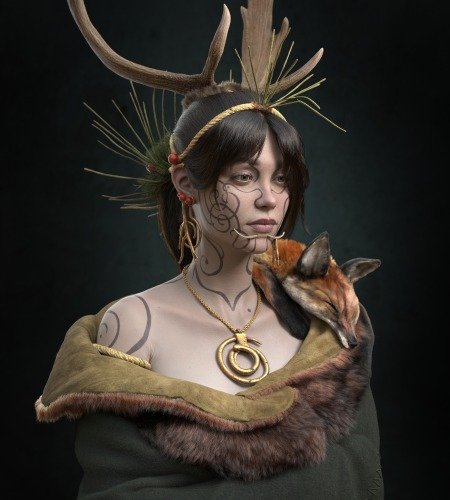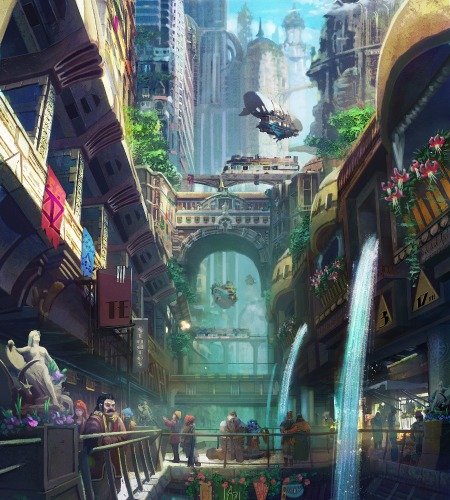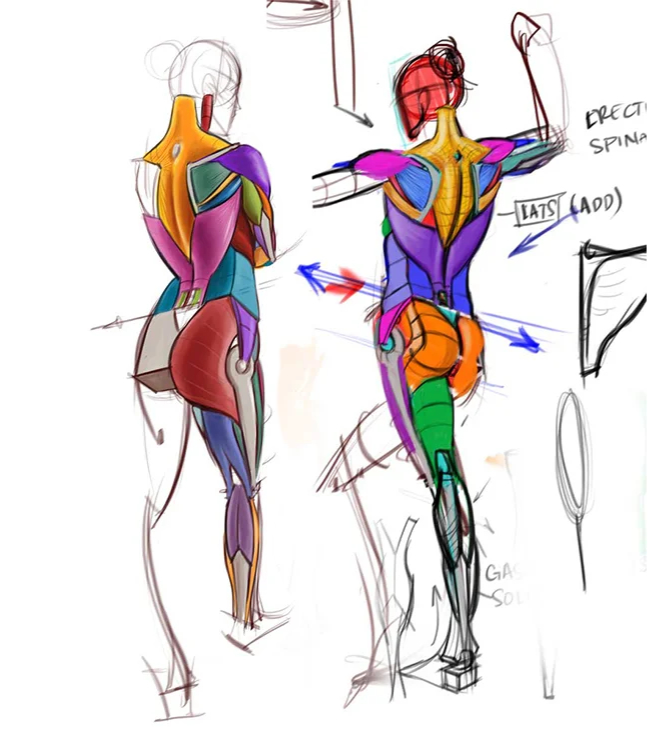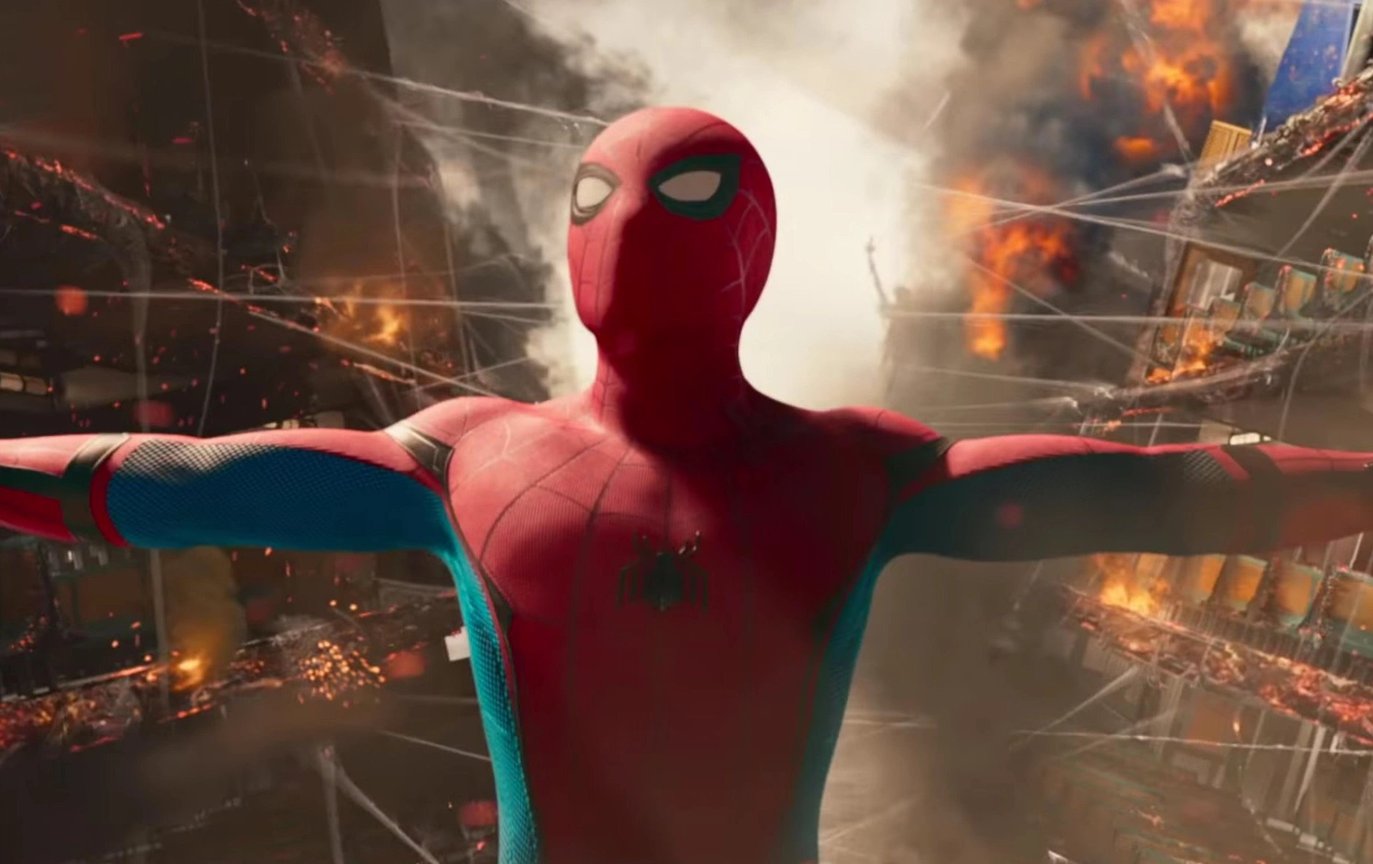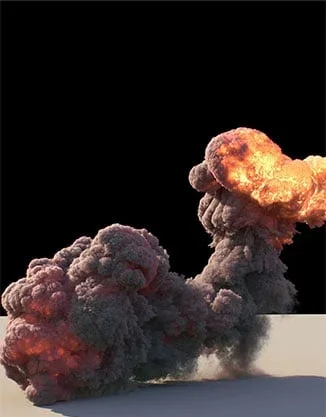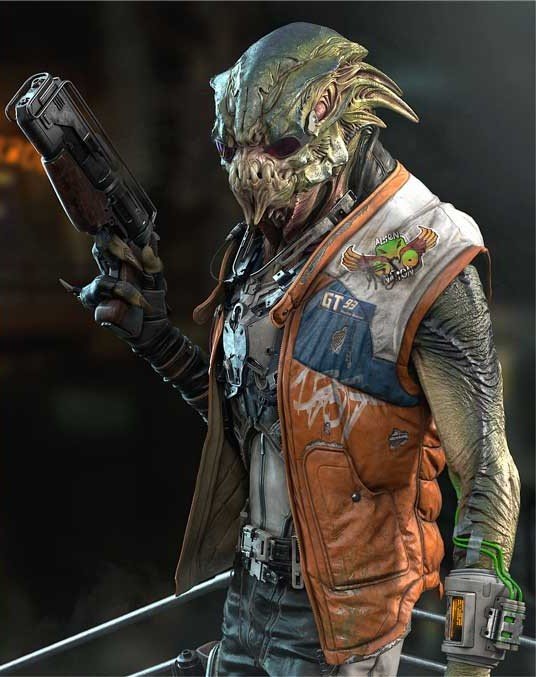Hidden Shrine: Game Location Production
Check out Emily Henderson’s discussion about her early experiments with environment design during the CGMA course Vegetation & Plants for Games.
Introduction
My name is Emily Henderson and I am an Environment Artist based in Los Angeles. I received my Bachelors in Fine Arts with a minor in mathematics from Whittier College. At the time I felt incomplete, therefore I attended Rio Hondo Community College where I enrolled in their 3D Animation program. I quickly and enthusiastically made the transition from traditional to digital 3D art. Understanding the possibility of obtaining a job in the gaming industry sparked a fire in me that is everlasting.

After completion of the Animation program, I began taking classes at CG Master Academy. Taking courses at CGMA has proven to be one of my best decisions. So far I’ve completed Foliage and Vegetation with Jeremy Huxley and Texturing and Shading for Games with Kurt Kupser. Both classes have pushed my artwork to the next level and put me in connection with some really amazing artists. Soon I will participate in their new class The Art of Lighting for Games with Omar Gatica. I would definitely recommend looking into CGMA for any artist who wants to take their work to the next level, or anyone who just wants to learn something new!
I currently work as an accountant. However, through learning and meaningful experiences at Rio Hondo CC as well as CG Master Academy I hope to gain employment in the gaming industry in the near future.
Concepting
I developed a scene entitled Hidden Shrine while taking Jeremy Huxley’s
My main tasks included juxtaposing natural beauty with Japan’s manmade environments and cities. Gathering references photos is one of the most important aspects of creating a solid idea. I put various images together in one .psd file so that I could collectively view them and make sure they fit together. Once I have enough reference photos, I break the idea down piece by piece and form a Style Guide. This is so that the scene become simpler and easier to manage. At this point, I think about what kind of plants and assets I want in the scene, what architectural structures to use, as well as other aspects such as textures, atmosphere, lighting, and color palette. Blocking out a scene is very experimental for myself. Sometimes I start by sketching around in photoshop, however for this particular scene I really didn’t know what layout would work. Therefore, I began with rocks and tree bases that I knew I could use several times throughout the scene. It is an unnecessary a waste of time to make countless of unique rocks. One trick I use to be time efficient is making a single rock that would look different from multiple angles and placements. I also knew I would radically scale these rocks to different sizes so I did not sculpt any micro detail into the rock. Instead, I kept this as simple as possible, while still showing an interesting silhouette. This is because details can be added later with fairly simple shaders. Unreal’s Landscape tool is very powerful. This tool was used to quickly block out the terrain and get an idea of what I wanted. Several iterations were made and then scrapped before coming up with something that would work. It feels abstract to layout an area that will be filled with vegetation without actually having the vegetation yet. I found it important to not get too attached to anything since it may not work in the end. Once I had a layout that I liked I’m always sure to share my idea and get opinions from others. One of the most helpful things for me in making this scene simply came from me asking for help and critique from my mentors and peers. For me personally, foliage and vegetation is best made in Zbrush. I generally used a 2048×2048 document size. This isn’t standard when you open Zbrush but it can be changed at any time. Using a square document makes it easier to grab textures from it when finished. To begin modeling I break down the plant into its smallest parts. For my cherry blossom tree that meant breaking it down from branches, to twigs, to stems, and then finally to buds and petals. For something simpler, like vines, it only needs to be broken down into segments, leaves, and stems. This method was used for all my foliage. I started by making a single leaf from a sphere. I dynamesh it to something low like 128 or 256. It’s much easier to keep the dynamesh low until I am sure about the general silhouette. Once satisfied with the leaf sculpt, I use polypaint to texture it. Several of my peers used other programs like photoshop or substance painter, I found there was no one right answer. Substance Painter is a very strong program and I use it to texture other, more unique, assets. From the single leaf, I duplicated and altered it to end up with three or four variations, generally ranging from alive to dead. The variations then are placed around a stem to create sections of the plant. I then arrange sections of plants in the borders of my document, keeping a square setup. I think of it like a UV editor in Maya. Putting a plane behind it will help with this and also allow you to control the color of the background. The Diffuse, Normal, and Height maps can all be taken directly from Zbrush using GrabDoc. To get these maps, go to the render settings and make sure shadows are turned off. Then set the rendering to flat and immediately you have your diffuse texture! To export the material, go to the Texture tab, then GrabDoc at the bottom. Hit export and save! You can repeat this process using the normal material to get the Normal map. Similarly you can export a height map by right clicking on alpha and GrabDoc from there. A little bit of editing can be done in either Substance Designer or Photoshop to these exports to make the Alpha, Roughness, and Ambient Occlusion map. For the sake of efficiency in the game engine I like to channel pack my textures. I put the Alpha map in the alpha channel of the diffuse map. In a separate texture I pack my Ambient Occlusion map in the Red channel, Roughness in the Green channel, and Metallic in the Blue channel. A single plane is created and assigned a new material named accordingly. I then cut out each leaf and bundle and separate into single objects. I like to keep the Preserve UV setting on, it helps when cutting out the segments. Then, vert and edge manipulation is needed to form them into their proper shapes. Maya doesn’t handle alphas very well so I simultaneously work in marmoset to make sure things look the way they should and leaves aren’t floating in mid air. The majority of the scene will be covered in natural elements, but I needed a few architectural pieces and small assets to bring everything together and tell a story. Everything begins or ends in Maya. The temple itself is built from many modular pieces and a few unique ones. The Torii proved to be a challenge since it was so large. The two Komainu were the most fun assets to model. Prior to this scene I was mainly a hardsurface modeler, so to play around with character-like assets was quite fun. They began as blocks in maya and were then sculpted in Zbrush. Everything was baked and textured in Substance Painter. Substance Painter has been the absolute best program for both baking and texturing unique assets. It even has options that allow for a streamline workflow right into Unreal. I used Substance Designer to make all of my procedural textures. I have to thank Jeremy Huxley’s CGMA class for helping me understand Designer, because it was quite daunting to learn on my own. I made a range of fairly simple materials. The Loam material was made from height maps, from my Zbrush sculpts, blended together. The bark texture was by far the hardest material I’ve made. Node-based texturing didn’t come easy to me and it was a challenge to make something so organic through such a mathematical process. Just like any other challenge I broke it down into parts and tackled it piece by piece. There is also a great breakdown tutorial from Peter Sekula that helped fix some of the problems I was having with this material. Unreal also uses nodes in its shaders. Master materials can be made using maps exported from Substance Designer. A common mistake of mine is to make textures too saturated for real life. Setting up a good master shader in Unreal is useful for changing things like saturation, roughness, and other parameters on the fly in real time. It also allows you to make instances of the same material very quickly and easily. There are five lights in total in this scene. The most important of these lights was the directional light. Directionality is very important in games and I note that most often it is light that points a player in the direction they need to go. I used that same method in this scene. The most important light was the Directional light that I used this to light up the areas in the background, while leaking through the trees and lighting the path. The best lighting suggestion I was given was to move the light in a way that produced volumetric light rays or as many like to call them “God Rays”. They create diagonals over the scene and make the it feel more dynamic. These rays can only be seen from specific angle situations, which proved to be a challenge, but I made sure they could be seen from the most common and important ones. Using Unreal’s Detail Lighting render relieved some of the noise and confusion created by color. I wanted the Temple to be the main focal point, but the directional light source comes from behind it. So, I placed a spot light towards the temple and set it to a low intensity to illuminate the facade. Sometimes it’s best to cheat the “real life” scenario and go with what actually looks good. My biggest challenge was my tendency to obsess over polycount and texel density. I like to make sure things are technically correct and would make sense in the real world. This doesn’t always work or translate well in a game engine so it was a challenge for me to let go of some of those things and focus on making it look beautiful rather than be technical. Especially for a personal project, things like polycount and texel density just don’t matter as much as the overall image. Letting go of my obsession has really pushed my artwork forward to the next level. Time was also a challenge. There are many things in this scene I would love to have spent more time on, but I also felt it was important to not get stuck on any one object. Artwork can always be pushed further and is never ultimately finished, but at some point is important to call it done and move on to new work.
Blocking Out




Foliage and Vegetation








Maya

Other Assets

Texturing


Lighting


Challenges and Lessons



